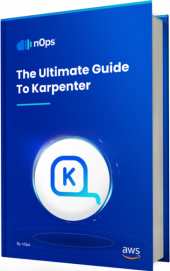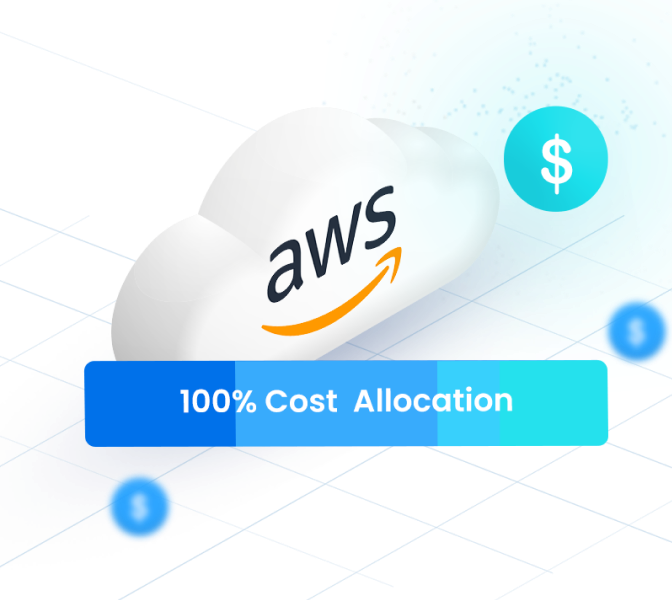AWS Cloud Management Tools Your Business Needs
If your business is undergoing continuous transformation, then you know how crucial it is to have a safe, dependable, and scalable cloud platform. And when it comes to flexible cloud computing services, Amazon Web Services (AWS) is a top player. However, managing an AWS cloud can be complex and overwhelming without the right tools in place. That’s why in this post, we will explore the essential AWS cloud management tools that your business needs to succeed. Whether you’re just starting with AWS or have been using it for a while, we’ve got you covered.
What is AWS Cloud Management?
AWS Cloud Management is the practice of overseeing and optimizing cloud resources to ensure cost efficiency, performance, and security. It involves monitoring usage, automating infrastructure adjustments, enforcing security policies, and managing budgets to prevent overspending. Without proper management, cloud environments can quickly become costly, underutilized, or vulnerable to security risks.
Effective cloud management helps organizations scale efficiently, reduce waste, and maintain visibility into cloud operations while ensuring workloads run reliably. This includes a range of proactive optimizations such as:
- Track and analyze cloud usage to identify cost-saving opportunities
- Automatically scale infrastructure up or down based on demand
- Apply security policies to prevent unauthorized access and misconfigurations
- Schedule non-essential workloads to run only when needed
- Consolidate billing and governance across multiple AWS accounts
- Detect and remediate performance issues before they impact users
#1: nOps

nOps is an ML-powered AWS cost optimization platform that helps AWS users reduce their costs by up to 50% on autopilot. It manages $2 billion in cloud spend and was recently named #1 in G2’s cloud cost management category. It makes it easy to implement comprehensive AWS Cloud Management best practices, with features like:
- Business Contexts: understand 100% of your AWS bill with visibility, automated cost allocation, tagging, budgets, reports, dashboards, alerts
- Commitment Management: risk-free automatic life-cycle management of your EC2 commitments
- nOps Essentials: right sizing recommendations with one-click apply, resource scheduling, optimization of storage via Git and Terraform integrations
- Compute Copilot: automatically selects the optimal compute resource at the most cost-effective price in real time for you — also makes it easy to save with Spot discounts
Our mission is to make it easy for you to optimize costs, so you can focus on building and innovating. You can book a demo to find out how nOps can help you start saving today.
#2: AWS CloudFormation:
AWS CloudFormation is a service that allows you to define and deploy your AWS infrastructure as code. To be precise, it helps you provision infrastructure resources in the cloud. You can create templates that specify the resources you want to provision (e.g. EC2 instances, load balancers, databases) and their configurations, and then deploy these templates to create and manage your resources in a repeatable and automated way.
It helps the user create cloud resources such as Amazon EC2 (Elastic Compute Cloud) Instances and RDS (Remote Desktop Services) Database Instances simply by creating a text file or template. In simpler terms, it automates the process of creating and modeling your infrastructure and applications.
The Ultimate Guide to Karpenter

#3: Amazon CloudWatch:
Amazon CloudWatch is a monitoring and analytical AWS service that provides real-time metrics and logs for your AWS resources and applications. You can use it to monitor the performance of your resources, detect and troubleshoot issues, and trigger alerts based on predefined thresholds or custom metrics.
CloudWatch gathers data and records logs in AWS. With CloudWatch, you can effectively monitor the following:
-
- EC2
-
- Log data
-
- Changes in resources
-
- Custom metrics
-
- Data reports
Besides monitoring AWS resources, CloudTrail can set and manage alerts and react to changes in resources.
#4: AWS CloudTrail:
AWS CloudTrail is a handy tool that enables users to govern, perform risk audits, and stay compliant. It provides data logging, continuous monitoring, and tracking user activity over your AWS Infrastructure. It provides a complete audit trail of all activity in your account, including the actions, when they were made, and what resources were affected, making it easier to track changes and investigate security incidents.
With this tool, it’s easy to detect vulnerabilities in your system and remediate them in time. If you need to perform compliance audits, you can rely on CloudTrail for 360-degree visibility over your AWS.
#5: AWS Systems Manager:
AWS Systems Manager is a single interface for tasks such as patch management, configuration management, and resource inventory, and can be used to manage both AWS and on-premises resources. AWS Systems Manager comes with an intuitive user interface to help users view operational data from multiple AWS services. This makes it easy to monitor all resources and automate simple operational tasks.
To be precise, it is a management service that helps you automate operational tasks and manage your infrastructure at scale helping you with the following:
-
- OS (operating system) patching
-
- Configuring Linux and Windows operating systems
-
- Creating system images
-
- Collecting software inventory
#6: AWS Config:
Misconfigurations, especially in EC2 and S3, can expose your infrastructure to security vulnerabilities and attacks. Thus, AWS Config comes to rescue that is primarily a service that allows you to assess, audit, and evaluate the compliance of your AWS resources against your desired configurations and policies. It continuously monitors your resources and records any changes to their configurations, allowing you to track compliance over time and quickly identify any deviations from your desired state.
Ideally, AWS Config provides visibility of your AWS from a configuration perspective. It makes it possible to view configuration history and the relationship between assets and configurations.
nOps is an All-In-One AWS Cloud Management Tool

nOps is an all-in-one AWS cloud management tool that enables businesses to manage and optimize their AWS environments. It provides a unified view of all AWS accounts, regions, and services, helping users to quickly and easily identify idle resources and take action.
The tool also provides a comprehensive cost optimization feature, with detailed reporting and analysis of AWS usage and cost. Users can identify cost-saving opportunities, optimize reserved instances, and forecast future usage and costs.

In addition, nOps provides customizable alerts and notifications, enabling users to set up alerts based on specific events or changes in the AWS environment. This helps to ensure that users are always aware of potential issues and can take immediate action to mitigate them.
Your team focuses on innovation, while nOps runs optimization on auto-pilot to help you track, analyze and optimize!
Let us help you save! Sign up for nOps today.






